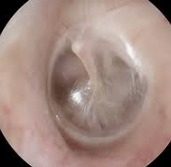A single drop of blood (Water) Contains five million red blood cells, 10000 white blood cells and platelets quarter million and as an increasingly large number of scientists key to fighting cancer.
More than 8 million people die each year from cancer. 70% of them in the poorest countries where it is almost impossible to maintain programs for early diagnosis of the disease. These programs are expensive, complex and difficult to implement. But if we could detect any oncological disease through a simple blood test, modern medicine would change forever. Is it possible or is too good to be true?
Cancer and its demons
To say that cancer is a complex disease is not only obvious but is very short stay. Cancer is a huge set of diseases related to different forms, symptoms and locations have in common is that some cells begin to divide without stopping occupying all the space possible. That is, the tumors are invading surrounding areas (and not so close, sending cells through the bloodstream) long before its symptoms.
This means that, traditionally, efforts have focused on its early diagnosis. In 1924, Joseph Colt Booldgood, a surgeon at Johns Hopkins Hospital, said that “cancer deaths could be virtually eliminated […] if the people affected to seek medical help immediately after discovering a strange growth on any part of your body”. As they explained Helena Matute and Nai Pereda, “We have been brought up in the belief that more diagnoses and, above all, early diagnosis, are synonymous with a better medicine.” A belief that, although it has recently had some response, remains fully valid.
The problem is that screening systems can identify potential cases of cancer but in the vast majority of them biopsy is the only way we have to get a definitive diagnosis. And a biopsy is the removal of a small piece of tissue or cells for examination through a microscope amount; extract a piece of meat, come on.
There are several types of biopsies but all have (to a greater or lesser extent) the same problems: they are invasive, costly and carry risk of infection. That is why we have long been looking for a replacement.
What if we do with the blood?
Earlier I mentioned in passing that tumors use the circulatory system to expand. Being a bit more rigorous what happens is that some cells or cell pieces break off and pass into the bloodstream. Thus, cancer spreads to its initial place other body parts, what is called metastasis.
That is, long before symptoms are noticed the cancer is already leaving its trace in the blood. So many researchers have been working on the “years liquid biopsy”. And although there has been some progress (to identify, for example, ‘tumor markers’ to help select best treatment), no one has yet achieved the fundamental key: diagnose cancer in someone who does not have symptoms through a simple blood test.
To be achieved, it would be just what we looking for one hundred years: identify tumors so simple, cheap and very early. No one can wonder that in the US alone has 38 projects working in these liquid biopsies.
You may also like to read another article on xWorld: Detecting Cancer Early
What’s in a drop of blood?
There are two main lines of research and a huge competition. Mehmet Toner and Daniel Haber are two doctors from Massachusetts General Hospital who have spent years working on finding technologies that allow you to filter and ‘hunt’ those cells. They quickly realized that identifying these cells was much more complicated than it seemed.
So they decided to reverse the idea: what if all known seeping blood components (red cells, lymphocytes, platelets, etc.) and just looking at what was left after filtering? Or put another way what if instead of looking for a needle in a haystack, they put him fire the barn and rummaged through the remains? Thus he was born ‘iChip’ which is still in development but is a very promising tool.
Other researchers have opted for another option: there are not only whole cells in the blood; there are also small pieces of DNA that circulate freely throughout the system of cancer patients. It seems easier to find one of those pieces (as they are more numerous) than a whole cell. In contrast, the circulating tumor DNA can give us much less information.
The first biopsy approved by the American FDA (the CellSearch, a test for localized breast, prostate and colon) using precisely this orientation.
The goose that lays golden eggs
In 2015, it was estimated that, first, the market for liquid biopsies would be about $ 29 million. But in reality the potential market is much larger. We talk about a technology that can easily be extended to any site that has a clinical laboratory. That is, almost anywhere on the planet.
So much so that has attracted the attention of people like Bill Gates, Jeff Bezos and a handful of investors. Because, here among us, the liquid biopsies are the gateway to an even more fascinating world: the medicine, precision, an intervention model that uses genetic and molecular analysis for customization practices, medicines and medical decisions. That’s where experts say it is truly the future and this is just a first step to achieve this.



